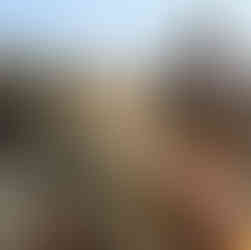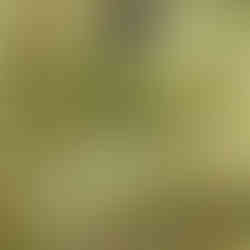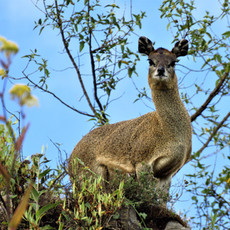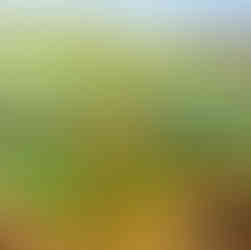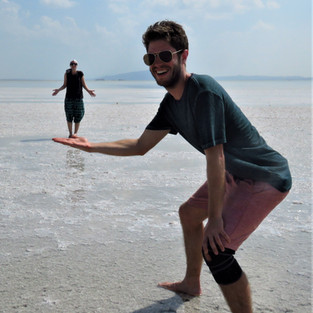The monkey with the "bleeding heart"
- savetheorangutans4
- Jan 11, 2019
- 4 min read
Updated: May 25, 2021
As somewhat of a surprise, my beau whisked me away to Ethiopia in November last year with two dear friends in tow.
“Why Ethiopia?” I hear you ask.
Imagine the most stunning scenery with breath-taking backdrops as you hike in the Simien Mountains. Imagine a giant crepe as big as your table filled with many delightful curries to feast on. Imagine exploring 12th Century churches that have been dug into a huge rock face. Imagine riding up an active volcano at night on a camel called Eddy only to discover the psychedelic colours of the lost world where thermal activity meets salt water. And finally, imagine sitting amongst grass-eating Gelada monkeys with their bums in the air as they rummage for herb roots in the dirt! Oh, and Ethiopian Airlines had a mega sale. That’s why.
The trip totally blew my mind! I had never imagined Ethiopia would be so magical! I will let the montage of photographs do most of the talking...
We started off in Gondar; a quaint town with lots of charm. We visited a local dilapidated palace and enjoyed our first injera meal (sourdough risen flat bread – the crepes I spoke of). Here we organised our 3-day hiking trip to the Simien Mountains (well named for the Gelada monkey dwellers).
Unlike other primate species (most notably baboons), Gelada monkeys (Theropithecus gelada) don’t have bright, bulbous butts to attract attention. Instead they have a red “bleeding heart” on their chest. Apparently the more red the heart, the more sexy you are (same goes with the butts for other primate species). If only it was so simple for humans…
These endemic, ancient grazers are only found in Ethiopia at high altitudes. They have a very unusual social system whereby male-dominated family groups will come together to form bands. Bands will then come together to form herds of up to 1200 individuals! Safety in numbers and all that, especially at night. Gelada monkeys can often be found sleeping inside fissures on cliff faces; really quite miraculous!
It was an absolute dream to see them! We sat a safe distance away amongst the herd and watched infants topple over their mothers as they played together, and dominant males grunt past each other as they demonstrated their power. Some stupid tourist broke the rule of keeping a clear 7-10 metre distance, and although not an aggressive species, a male went for her… Such a shame he didn’t steal her camera!
We camped and had baby-wipe showers. It was freezing at night but our chef (he had a hat and all!) rustled up some wonderfully delicious, warm food at 3000+ metres. We were fortunate to see jackals, a mole before my beau sat on it (it survived), a “rabbit” (looked more like a giant mouse to me), and plenty of birds! We had an armed escort wherever we went who carried an old-looking rifle (we later saw a similar one in a museum in Addis Ababa, the capital).
After the mountains, we trekked to Lalibela. This is where most of the tourists had been hiding; so far we had only seen about 30 maximum. Everyone had come to see the old 12th Century rock churches. Found in a small cluster in the town, you can visit them all easily in 1-2 days.
We even found time to visit one lone church, Yemrehanna Christos, 1.5 hours outside of town which had been built on top of water (!) inside a cave!
“Follow me.” Said our guide as he led us around the back of the church and into the darkness. He suddenly shown his torch towards the back of the cave. We all gasped!
There, lying less than one metre in front of us, were thousands of mummified bodies! Apparently these devotees had made a pilgrimage to die here. Due to the perfect climatic conditions, the bodies don’t decay properly. There were apparently more than 5000 of them! The stuff of nightmares! But truly an incredible and thought-provoking sight.
The last part of the trip involved visiting the “hottest place on Earth”, also known as the Danakil Depression, formed by the divergence of three tectonic plates. It is about -125 metres below sea-level and has an annual average temperature of ca. 35 degrees Celcius. Man, it was warm. As you step outside, the warm air hits you like a shovel in the face. And the sweat instantly begins to trickle down your body.
My beau and I hiked up and slept on the crater of the active volcano known as Erta Ale. What a bizarre, scary experience that was! Toxic fumes billowed from the crater as we watched the sunrise over the mountains the next morning, before heading towards the heart of the depression. There, can only be described as other-worldly.

Florescent yellows and greens dominated the horizon as we approached. Weird rock formations that looked like they belonged to Mars sprouted out of the ground. They reminded me of ancient, forgotten coral. I laughed hysterically to myself like a mad woman as each turn produced a new, more bizarre-looking feature from the last. It was definitely one of the most awe-inspiring places I have ever visited (and probably will ever visit).

Our trip ended in Addis Ababa where I got to pay my respects to Lucy; our 3.2 million year old hominid ancestor. Discovered by Donald Johanson in 1974, the Australopithecus remains stood a mere ca. 1 metre tall. She was an absolutely beauty! We also attempted to sample the jazz nightlife and local brew (Lucy stayed in the museum).
what about the gibbons?
My wonderful gibbons haven't been forgotten, don't worry! In fact, I am currently in Hong Kong doing an intense language immersion course to improve my Mandarin. One week in and I can already hold a basic conversation and write a number of characters. I am here for another 3-4 weeks, so I am hoping to improve a lot during this time! After which, I will go to Hainan and Yunnan to trial my PhD methods and collect some of my first data! I am super excited! My next blog post will be all about my Hong Kong life.
E: carolyn.thompson.17@ucl.ac.uk | T: @gibbonresearch | IG: gibbonresearch










